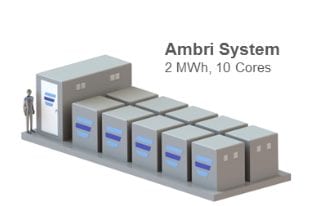The US developer of liquid metal batteries – a potentially cheap alternative to the current technologies being deployed in energy markets – says that Australia could become a leading manufacturing base for battery storage.
 Donald Sadoway, a professor from the Massachussetts Institute of Technology, is seeking to strike up research partnerships with Australian universities and secure funding $50 million for a pilot manufacturing plant of the liquid flow batteries.
Donald Sadoway, a professor from the Massachussetts Institute of Technology, is seeking to strike up research partnerships with Australian universities and secure funding $50 million for a pilot manufacturing plant of the liquid flow batteries.
He is also proposing establishing a test facility near the NSW town of Hay to install the LMB batteries with a solar farm and deliver power around the clock – and to demonstrate the “base load” potential of solar.
The LMBs are being hailed as a potentially low cost option for utility-scale battery storage. That is because the nature of the technology means that they can cycle – or discharge – thousands of times without having its capacity reduced.
That means that even though the LMBs might cost more upfront, they will have a far longer life, reducing the levellised costs of the technology. Indeed, Sadoway’s team says such batteries could last 300 years.
The LMBs are currently being brought into commercial deployment by the company that Sathoway co-founded, the US-based Ambri.
But Sadoway argues that the LMBs should be manufactured in the same markets that they are deployed, and he sees Australia, with its vast and expensive grid, and excellent renewable resources, as the perfect market.
“There is a growing need for sustainable sources of electricity and storage is the missing piece,” Sadoway told RenewEconomy in an interview ahead of his visit to Australia.
Wind and solar are obvious substitutes for the coal-fired generation that currently dominates in Australia’s electricity market, but because they are intermittent storage will be required as penetration rates increase.
And because of its vast distances, Australians also pay huge amounts for the cost of delivery of their electricity which have to be transported across hundreds, if not thousands, of kilometers of poles and wires.
Australian network operators are already looking at battery storage as a way of reducing the need of upgrading their poles and wires. Ergon is installing up to one hundred 100kWh systems in Queensland, while other network operators such as South Australia’s Power Networks see battery storage being deployed to help develop micro grids, and take advantage of local renewable generation.
Sadoway is in late-stage negotiations with the ANU about a four-year joint research project, and says it is possible that Australia could become a hub for manufacturing the batteries.
He is proposing a $50 million manufacturing plant as an initial step, but sees the market for such batteries in Australia in the billions of dollars. (Australian networks spent $45 billion on grid upgrades and extensions just in the last five years).
Sadoway intends to speak with government decision makers regarding funding for the research project (which he budgeted at around $9 million), which would include the working test site in Hay.
Sadoway notes that city folk are currently subsidising the cost of the regional networks in regional areas. In Queensland and Western Australia, for instance, it amounts to more than $600 million in each state each year.
And as renewable production, and opportunities, increase, and the grid continues to age, cost effective grid storage presents a solution.
Sadoway says the LMB will likely be first deployed at scale later this year. A 100kWh facility is being installed at a military base at Cape Cod, where solar and wind are also deployed, and another installation will go in Pearl Harbour, Hawaii.
Sadoway says the advantages of the LMB are that they are low cost, because they use cheap and abundant materials, have a simple design, a long lifespan, and are flexible.
They are also built in modular systems, have no moving parts, and they are unique. It is the only storage solution commercialized or in development where all three active components – both electrodes and the electrolyte separating them – are in liquid state when the battery operates.











